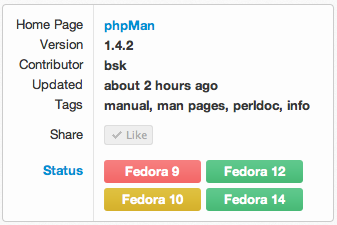Difference between revisions of "App release process"
From Amahi Wiki
| Line 4: | Line 4: | ||
* Alpha (red): when an application is created, it's in Alpha. Only the user who packaged this app can see it and install it. | * Alpha (red): when an application is created, it's in Alpha. Only the user who packaged this app can see it and install it. | ||
| − | * Beta (Orange): when an app reaches Beta it has to be installable (and uninstallable) at a minimum and it can only be seen by the group of users in the [[ | + | * Beta (Orange): when an app reaches Beta it has to be installable (and uninstallable) at a minimum and it can only be seen by the group of users in the [[Tester program]] |
* Live (Green): when an app is well tested and suited for every new user, it goes live and it should work for everyone | * Live (Green): when an app is well tested and suited for every new user, it goes live and it should work for everyone | ||
Revision as of 23:22, 15 April 2011
Applications for Amahi have a release process as they progress to full release. Each app has a support status in one or more Amahi platforms (Fedora 9, Fedora 10, 12, and 14, and eventually Ubuntu/Debian, etc.)
The application page lists the status of the application for each platform. Here are the states:
- Alpha (red): when an application is created, it's in Alpha. Only the user who packaged this app can see it and install it.
- Beta (Orange): when an app reaches Beta it has to be installable (and uninstallable) at a minimum and it can only be seen by the group of users in the Tester program
- Live (Green): when an app is well tested and suited for every new user, it goes live and it should work for everyone
Here is a sample of an app in Alpha on Fedora 9, in Beta for Fedora 10 and Live in Fedora 12 and 14:

